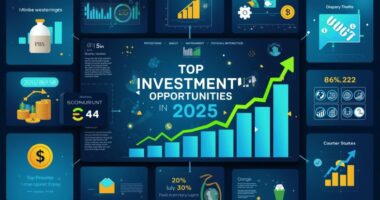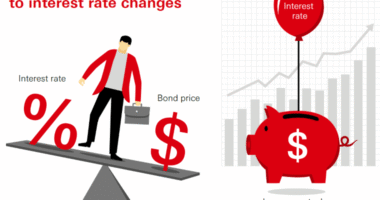Inflation is easing — but not disappearing
Global inflation has finally retreated from its multi-decade highs, and central banks across the world are cutting interest rates to support growth. Headlines celebrate the “end of inflation,” but beneath the surface lies a subtler, more persistent story.
Even as price indexes cool, many households still feel squeezed. Food, housing, and service costs remain elevated, and real wages are only now catching up. This paradox — lower inflation but stubbornly high prices — defines what economists call the inflation illusion.
Understanding this phenomenon is essential for investors and policymakers navigating the next chapter of the global economy.
What is the “inflation illusion”?
The inflation illusion occurs when inflation slows down — meaning prices rise more slowly — but consumers still experience the effects of previous price increases.
A can of coffee that cost $8 in 2021 now costs $11. If it rises to $11.20 next year, inflation is technically low, but the price is still far above where it started.
This illusion distorts perception and policy alike:
-
Consumers feel poorer even as inflation “improves.”
-
Businesses face higher wage costs without the ability to keep raising prices.
-
Investors must navigate a landscape where nominal growth looks solid but real purchasing power remains constrained.
The challenge for 2026 isn’t runaway inflation — it’s adapting to a permanently higher price baseline.
The global picture: easing, not reversing
United States
U.S. headline inflation has fallen to 2.4%, down from 7% two years ago. However, core services — particularly housing and healthcare — remain sticky. The Federal Reserve’s recent rate cuts signal confidence, but wage growth of 3.6% continues to feed modest price pressures.
Europe
Europe’s inflation stands at 2.8%, with sharp variation across countries. Energy prices have normalized, but food and housing costs are keeping consumer sentiment subdued. ECB officials warn that “perceived inflation” — how people feel about prices — is lagging behind official data.
Asia-Pacific
In Asia, inflation is comparatively stable, averaging 2–3%, but rising wages in India, Indonesia, and Vietnam are pushing up costs of living. Japan, after decades of deflation, is grappling with the cultural shock of sustained price growth.
In short: inflation is no longer the crisis it was — but it’s also not over.
Central banks: navigating the new equilibrium
Monetary policymakers are learning that inflation’s decline doesn’t automatically restore affordability.
With rates now in easing mode, central banks must avoid overcorrecting. Cutting too aggressively risks re-igniting inflation; cutting too little risks stagnation.
The new strategy mix
-
Targeted liquidity — supporting sectors that boost productivity rather than blanket stimulus.
-
Fiscal coordination — governments are aligning spending with growth goals, especially in green tech and AI infrastructure.
-
Communication discipline — clear messaging helps prevent market overreactions.
This hybrid approach — monetary easing with fiscal discipline — may define 2026’s economic framework.
Corporate response: pricing power fades, innovation rises
The golden age of “pricing power” is ending. From 2021–2024, firms easily passed higher costs to consumers. That leverage is now fading as competition intensifies.
What’s happening in boardrooms
-
Cost optimization: Companies are investing in AI and automation to reduce labor and logistics expenses.
-
Value differentiation: Brands are emphasizing quality and sustainability to justify prices.
-
Debt management: With interest costs still elevated, firms are refinancing strategically before 2026.
Sector breakdown
-
Consumer goods: Pricing flexibility narrowing; focus on volume growth.
-
Technology: Margin expansion through AI-driven productivity.
-
Healthcare: Resilient demand, but political pressure to control prices.
The winners of this new phase will be those who can grow earnings without relying on inflationary tailwinds.
Equity markets: priced for moderation
Investors are adjusting to a world where inflation is lower — but not gone.
Global equities remain strong, with the S&P 500 up 9.7% year-to-date and Europe’s STOXX 600 up 8.1%. Valuations have stabilized, suggesting that investors believe the soft-landing narrative.
Investor sentiment trends
-
Defensives rotating to cyclicals: Confidence in stable growth is pulling capital back to industrials and consumer sectors.
-
Emerging markets rebounding: Lower U.S. rates are driving capital flows to Asia and Latin America.
-
Dividend strategies rising: In a world of moderate inflation, yield becomes a key component of total returns.
Markets aren’t expecting fireworks — they’re pricing in durable, steady expansion rather than speculative booms.
Bonds: real yields still matter
Bond investors face a delicate balance. Yields have dropped as central banks ease, but inflation-adjusted returns remain modest.
-
U.S. 10-year Treasury: 3.7%
-
Eurozone sovereigns: 2.2%
-
Emerging-market bonds: 5.5–6.5% range
With inflation near 2–3%, real yields are positive but not spectacular. The best opportunities lie in intermediate duration and credit diversification — blending sovereigns with quality corporates.
Inflation-linked securities (TIPS, index-linked gilts) remain relevant as hedges against the inflation illusion — because even modest price growth erodes real income over time.
Commodities: the era of “sticky scarcity”
Even with inflation easing, commodity prices aren’t collapsing. Structural supply constraints — from green transition metals to climate-impacted crops — are keeping prices firm.
-
Oil: stabilizing near $79 per barrel
-
Copper: steady demand from AI and EV sectors
-
Agriculture: modest easing after two years of volatility
The takeaway: commodities now trade less on short-term demand and more on long-term structural scarcity. Investors using commodities as inflation hedges should maintain exposure but moderate expectations for big rallies.
Consumer reality: adapting to the “new normal”
Households are adjusting their budgets for a world where prices may never return to pre-pandemic levels.
Behavioral shifts
-
Value-conscious spending: Consumers prioritize durability, quality, and long-term savings.
-
Substitution effects: Store brands and local alternatives are gaining share.
-
Service over goods: Travel and experiences are rebounding faster than retail goods.
Personal finance strategies are also evolving. Households are refinancing mortgages as rates drop and reallocating savings from cash to investments that can outpace inflation over time.
The investor playbook for 2026: profit from perception
Markets often move on perception, not just reality. The inflation illusion means consumers feel strained, even if data shows improvement — and that perception drives behavior.
Actionable strategies
-
Equities: Focus on pricing resilience — companies with brand loyalty and cost control.
-
Fixed income: Ladder maturities to balance falling yields with inflation protection.
-
Real assets: Infrastructure and REITs remain valuable as inflation hedges.
-
Alternative assets: Consider gold, digital assets, and private credit for diversification.
This environment rewards adaptability over aggressiveness. The best returns will come from investors who understand both numbers and narratives.
Long-term outlook: the age of adaptive economics
The post-pandemic decade is shaping into an era of adaptive economics — where flexibility, innovation, and perception management define success.
Inflation will remain subdued but sticky; debt will stay high but manageable. Growth will be uneven but sustainable. And in that balance lies opportunity.
The inflation illusion reminds us that the economy is not just about data—it’s about experience. Prices, perceptions, and psychology intertwine to create the real story of prosperity.









